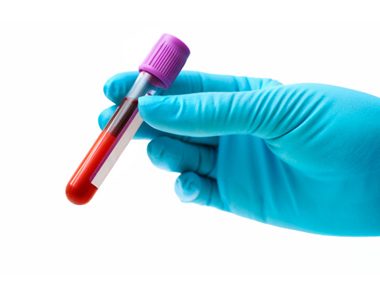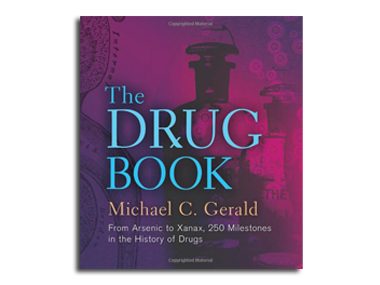
Novocain
We use it to: Numb a local area, such as while having a dental procedure. Who knew? The commonly used anesthetic is actually named for the drug cocaine. Cocaine was first introduced as a local anesthetic in 1884, but it caused a number of addictions and deaths. A few years later, German chemist Alfred Einhorn began to look for a safer substitute; in 1905, he discovered the injectable local anesthetic procaine, which became Novocain.

Lithium
We use it to: Manage mood disorders, like bipolar disorder. Who knew? Well before it received FDA approval in 1970, the metal was first used in the 1840s to treat bladder stones and gout. A century later, Australian psychiatrist John Cade observed that guinea pigs injected with a form of lithium became sedated rather than excited; subsequent large-scale clinical studies confirmed lithium’s effectiveness for preventing mania.

Cortisone
We use it to: Reduce inflammation; and treat pain, allergic, and skin disorders, as well as autoimmune diseases such as lupus and psoriasis. Who knew? Cortisone (and subsequent forms, such as hydrocortisone) was created out of a WWII rumor that German pilots were injecting steroid hormones to help counteract high-altitude stress. The myth spurred the U.S. military to research their own comparable drug.

Warfarin
We use it to: Stop blood clotting and save lives. Who knew? In 1921, veterinarians in Canada and North Dakota observed that when certain cattle had a minor injury or surgery, they bled excessively and sometimes fatally. The doctors concluded that the cows had been eating spoiled clover, which contained a substance that caused the bleeding. In 1940, a University of Wisconsin-Madison biochemist isolated a pure form of the compound, and later it was introduced to the market as Warfarin.

Rogaine
We use it to: Treat baldness. Who knew? Minoxidil first appeared on the market in 1979 as a breakthrough drug for high blood pressure. However, it increased body hair growth for 80 percent of patients who took the drug orally; within three to six weeks, patients would grow dark hair on the face and then on the back, chest, arms, and legs. Upjohn began marketing the drug as a solution to apply to the scalp in 1988.

Viagra
We use it to: Treat erectile dysfunction. Who knew? Sidenafil (the generic name) was first tested in the 1980s to treat high blood pressure and improve blood flow in patients with chest pain. In trials, it didn’t have much of an impact on angina, but it did lead to erections. In 1998 Sidenafil became the first oral drug approved to treat impotence, replacing injected medications.

Tamoxifen
We use it to: Treat estrogen-positive breast cancer, which accounts for 50 to 70 percent of cases. It may also prevent the development of breast cancer in high-risk patients. Who knew? Tamoxifen was originally intended as an anti-fertility drug when it was synthesized in 1962, but it turned out that it stimulated ovulation instead of suppressing it.

AZT
We use it to: Treat HIV/AIDS. Who knew? Jerome Horwitz, of the Karmanos Cancer Institute, first synthesized AZT as a potential anti-leukemia drug in 1964, but it didn’t work. In the 1970s, AZT was found to be active against a retrovirus, which led government researchers to consider it as an HIV fighter. The FDA approved the drug in 1987.

Enovid
We used it to: Prevent pregnancy (the drug is no longer on the market, but other oral contraceptives are). Who knew? In 1951, biologist Gregory Pincus used funding raised by Planned Parenthood founder Margaret Sanger to demonstrate that injections of the hormone progesterone prevented pregnancy in animals. Pincus conducted a clinical trial in 50 women three years later, in Puerto Rico; the 1873 Comstock Laws made the sale and use of birth control illegal in the U.S. When none of the subjects became pregnant, Enovid was approved in 1957 for menstrual disorders and in 1960 for contraceptive purposes.

Dextromethorphan
We use it to: Ease coughs (as it blocks a cough center in the brain). Who knew? The U.S. Navy and CIA helped to discover this drug when they funded a study to find a non-addictive substitute for codeine. The powerful pain reliever was also an effective cough reducer; however, as it is also a sedative it was not best for military employees.

How Drug Savvy Are You?
From arsenic to Xanax, learn about 250 milestones in the history of drugs and medication in The Drug Book by Michael C. Gerald.